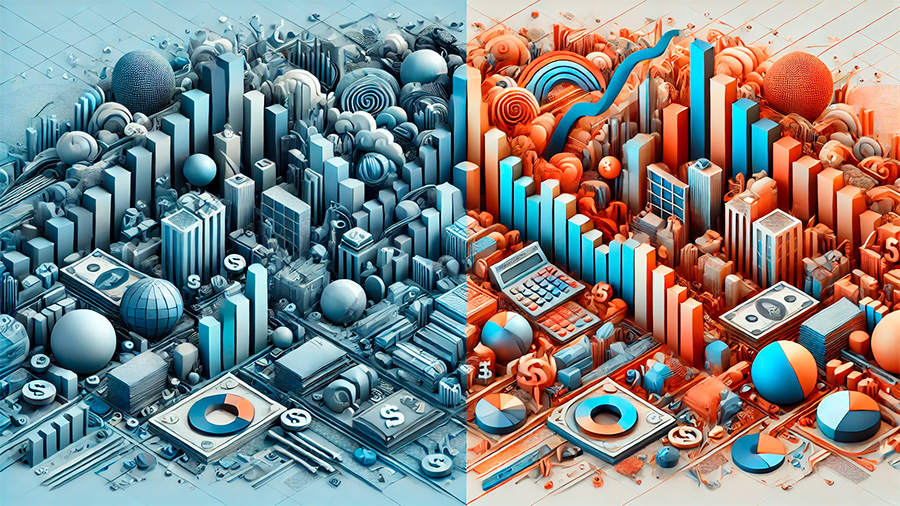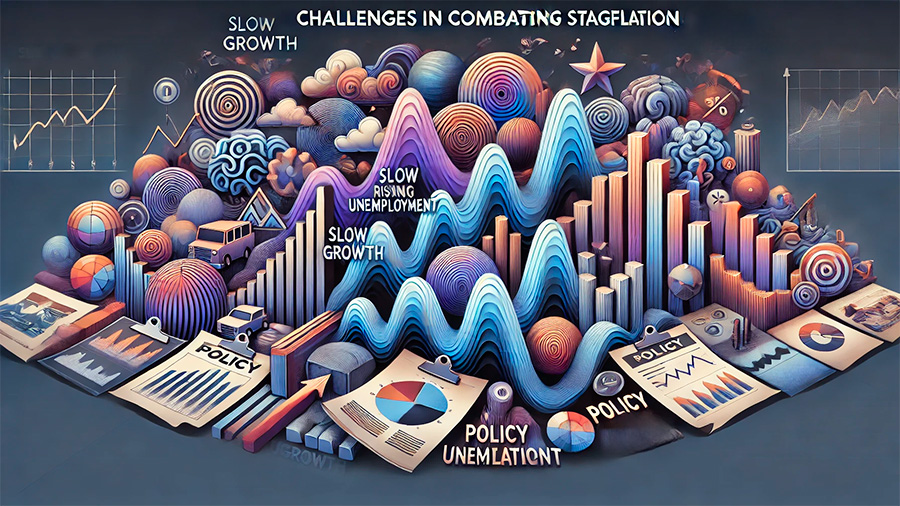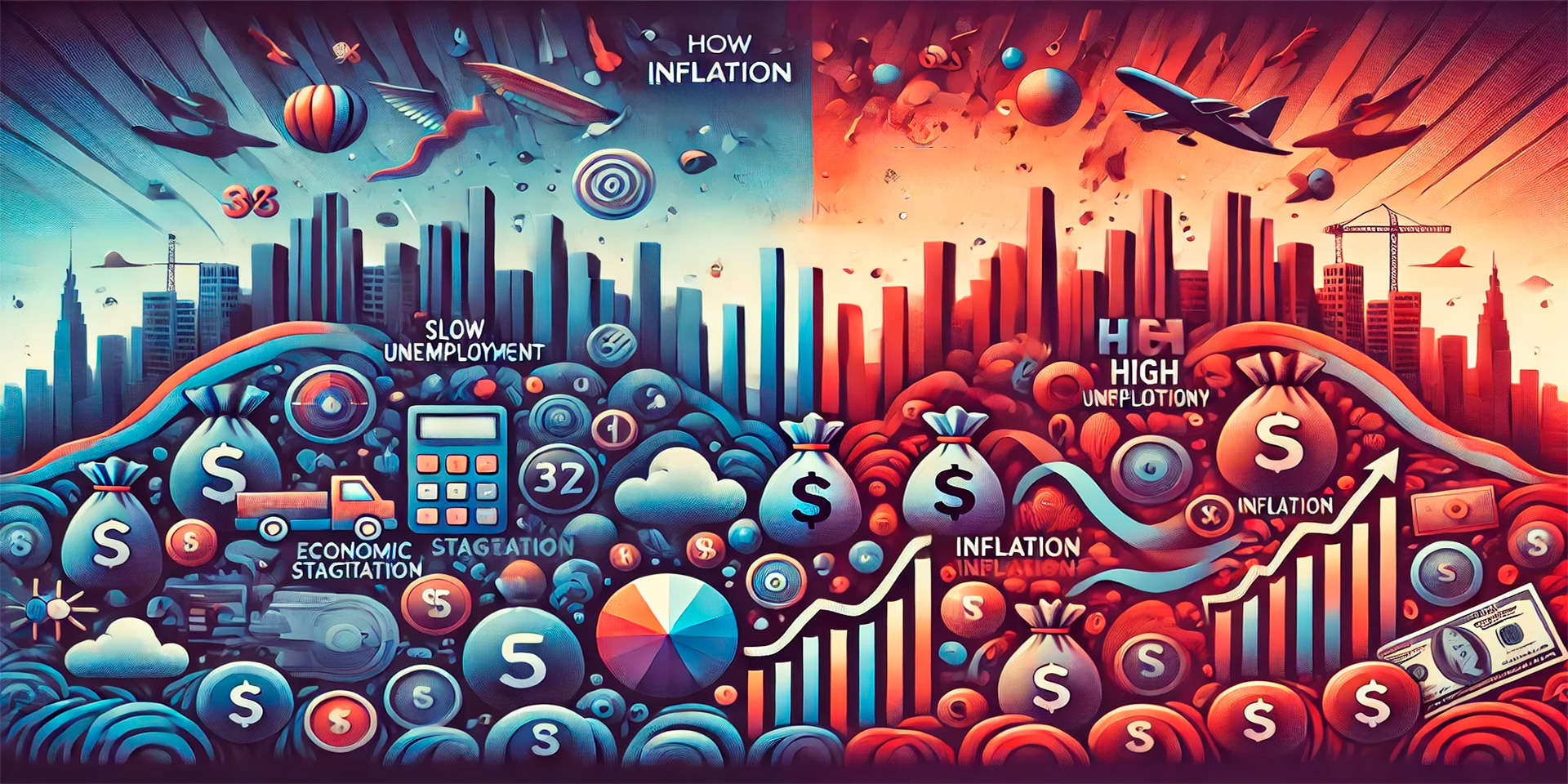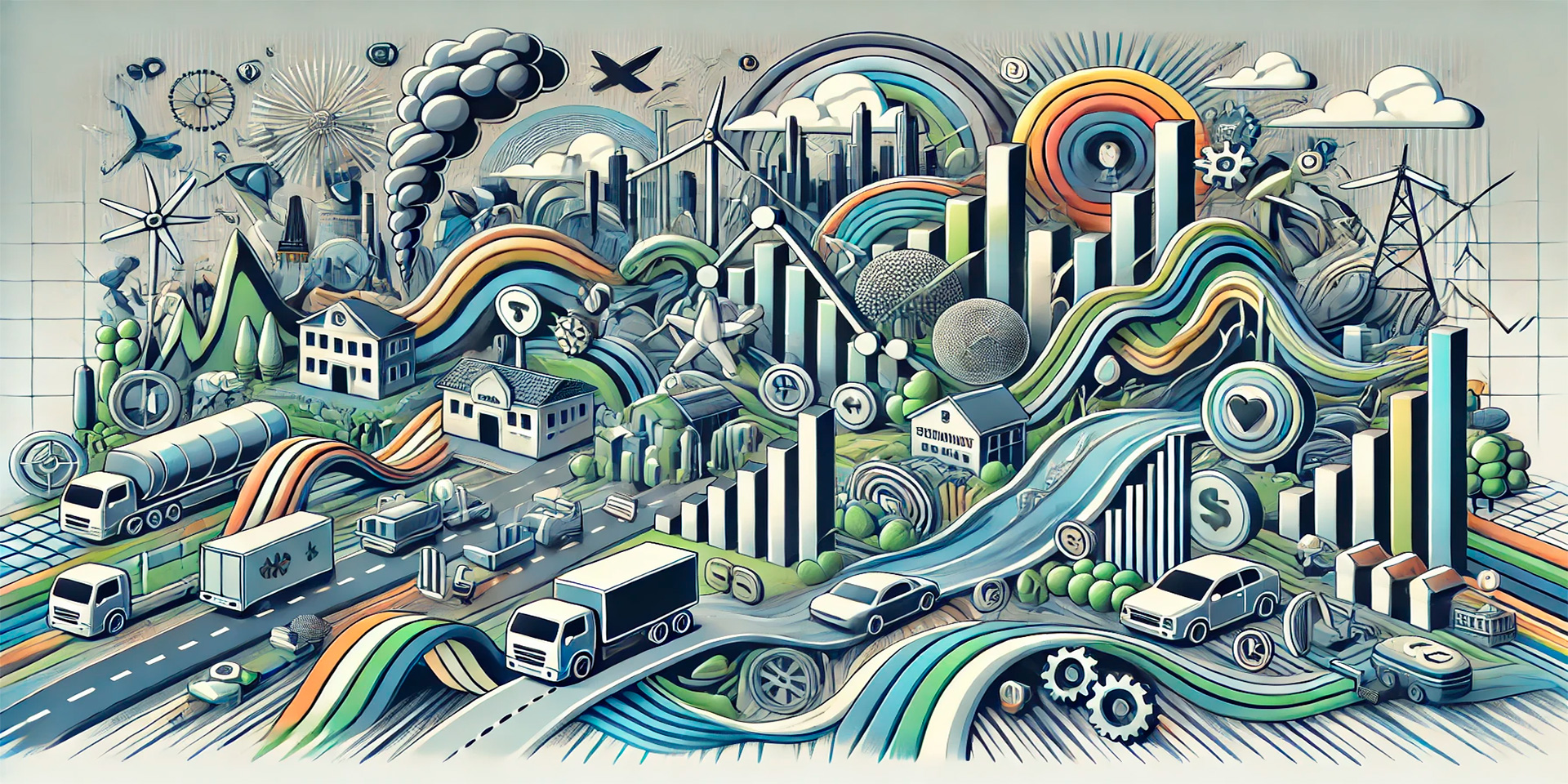Stagflation is a unique and challenging economic condition where stagnation—characterized by slow or no economic growth—occurs simultaneously with inflation, the general rise in prices. This combination is particularly problematic because the traditional tools used to combat inflation, such as raising interest rates, can worsen stagnation, and vice versa. Understanding stagflation, its causes, and its impact on economic stability is essential for policymakers, businesses, and individuals navigating such complex economic environments. In this article, we’ll explore how stagflation occurs and its effects on economic growth and stability.
What Is Stagflation?
Stagflation combines two economic conditions that are typically seen as opposing forces: inflation and stagnation. Inflation refers to the rise in the price of goods and services over time, which reduces purchasing power. Stagnation, on the other hand, involves a sluggish economy where growth is minimal, unemployment is high, and consumer demand is low.
Normally, inflation occurs in a growing economy where demand outpaces supply, while stagnation tends to occur in times of low demand and high unemployment. When these two conditions happen at the same time, it creates stagflation, a scenario that is particularly difficult to manage because the tools for addressing inflation and stagnation tend to contradict each other.
Key Characteristics of Stagflation
- High Inflation: A rapid increase in the cost of goods and services, which reduces consumers’ purchasing power.
- Slow or No Economic Growth: Despite rising prices, the economy experiences little to no growth in gross domestic product (GDP).
- High Unemployment: Stagflation is typically accompanied by rising unemployment, as businesses struggle to grow or maintain profitability.
The combination of rising prices and high unemployment makes stagflation a particularly painful economic condition for both individuals and businesses. Consumers face higher costs for necessities while earning less, and businesses grapple with lower demand and increased production costs.
What Causes Stagflation?
Stagflation is often the result of external shocks to the economy or poor economic policies that disrupt the balance between supply and demand. Several key factors can lead to the onset of stagflation, each affecting the economy in unique ways.
Supply Shocks
One of the primary causes of stagflation is a supply shock, which occurs when a sudden disruption in the availability of key goods or resources drives up prices. A well-known example of this is the oil crisis of the 1970s when OPEC (the Organization of the Petroleum Exporting Countries) reduced oil supply, leading to skyrocketing energy prices. The resulting increase in production costs for businesses led to higher consumer prices, while the reduced availability of energy slowed economic growth and increased unemployment.
Supply shocks create stagflation by pushing up prices (inflation) while simultaneously hindering economic output (stagnation). Other examples of supply shocks include natural disasters, geopolitical events, or pandemics that disrupt the supply chain for essential goods.
Poor Economic Policies
Government policies that fail to balance economic growth and inflation control can also contribute to stagflation. For example, excessive monetary expansion, such as printing too much money, can fuel inflation without corresponding growth in productivity or output. This scenario leads to higher prices across the board, but if businesses are not growing or investing, the economy can stagnate.
Additionally, policies that over-regulate industries or restrict supply—such as price controls or excessive tariffs—can stifle economic growth while driving up costs for consumers and producers. These missteps can trap the economy in a cycle of inflation and stagnation, with no clear path to recovery.
Wage-Price Spirals
A wage-price spiral occurs when rising prices lead to increased wage demands from workers, which in turn causes businesses to raise their prices to cover higher labor costs. This feedback loop can perpetuate both inflation and stagnation, as rising wages and prices push each other upward while economic growth stalls.
In a stagflationary environment, businesses face higher input costs—such as labor and raw materials—but may struggle to pass these costs onto consumers without losing demand. As a result, they may reduce hiring, leading to higher unemployment, further reducing consumer spending and economic growth.

The Economic Impact of Stagflation
Stagflation presents unique challenges for economic growth and stability, as it undermines both consumer purchasing power and business profitability. The effects of stagflation can be severe and long-lasting, affecting various aspects of the economy.
Reduced Purchasing Power
One of the most immediate impacts of stagflation is the reduction in consumers’ purchasing power. As prices rise and wages stagnate or fall, individuals can afford to buy less with the same amount of money. This decline in purchasing power forces many households to cut back on spending, particularly on non-essential items, which further weakens demand across the economy.
Reduced consumer demand leads to slower economic growth, creating a feedback loop where businesses are unable to expand, hire more workers, or invest in innovation. In turn, high unemployment exacerbates the loss of purchasing power as more individuals struggle to make ends meet.
Higher Production Costs for Businesses
Businesses are also hit hard by stagflation, as rising input costs—such as wages, raw materials, and energy—squeeze profit margins. Companies may attempt to pass these costs onto consumers by raising prices, but in an environment where demand is already low due to economic stagnation, this strategy can backfire. If consumers cannot afford higher prices, businesses may face declining sales, leading to cutbacks in production and layoffs.
For companies that rely on borrowing, stagflation can be particularly problematic. Central banks may raise interest rates in an effort to control inflation, making borrowing more expensive for businesses. This further constrains investment and growth, deepening the stagnation.
Increased Unemployment
Stagflation often results in rising unemployment, as businesses cut jobs to manage higher costs and shrinking demand. With fewer employment opportunities available, many workers struggle to find stable jobs, leading to long-term unemployment. The labor market becomes stagnant, with fewer new jobs being created and wage growth slowing to a halt.
High unemployment exacerbates the effects of stagflation, as jobless individuals contribute less to the economy through consumer spending, further deepening the economic slowdown. As businesses continue to struggle, the cycle of layoffs and reduced demand becomes difficult to break.

Challenges in Combating Stagflation
One of the reasons stagflation is so difficult to address is that the tools typically used to combat inflation and stagnation are at odds with each other. Policymakers face the challenge of finding a balance between controlling inflation and stimulating economic growth.
Monetary Policy Dilemma
To combat inflation, central banks typically raise interest rates, which increases the cost of borrowing and reduces consumer spending and investment. However, raising interest rates can also slow economic growth further, exacerbating stagnation and leading to higher unemployment. In the context of stagflation, raising interest rates to control inflation may deepen the recession, making it harder for the economy to recover.
On the other hand, lowering interest rates to stimulate growth can fuel inflation by making borrowing cheaper and encouraging more spending. In a stagflationary environment, this approach can worsen the inflation problem, creating a policy dilemma for central banks.
Fiscal Policy Trade-offs
Government fiscal policies, such as increasing public spending or cutting taxes, are often used to stimulate economic growth during times of stagnation. However, these measures can also drive up inflation if they lead to higher demand for goods and services without corresponding increases in supply. Additionally, excessive government borrowing to fund stimulus programs can lead to higher deficits and contribute to long-term inflationary pressures.
Striking the right balance between stimulating growth and controlling inflation is a difficult task for governments during periods of stagflation. Policymakers must carefully evaluate the trade-offs of various approaches to avoid worsening the economic situation.
Examples of Stagflation in History
Stagflation has occurred several times in modern economic history, with some of the most notable examples illustrating the challenges of managing this complex condition.
The 1970s Oil Crisis
One of the most well-known instances of stagflation occurred in the 1970s, triggered by the OPEC oil embargo. The sudden reduction in oil supply caused energy prices to skyrocket, leading to widespread inflation across the global economy. At the same time, economic growth slowed dramatically as businesses struggled with higher production costs, and unemployment rates rose.
The combination of rising prices, economic stagnation, and high unemployment created a prolonged period of stagflation that took years to resolve. Central banks raised interest rates to combat inflation, but this move deepened the economic slowdown, creating significant challenges for policymakers.
Post-Pandemic Supply Chain Disruptions
While not as severe as the 1970s oil crisis, recent supply chain disruptions following the COVID-19 pandemic have raised concerns about stagflation in certain regions. The pandemic led to shortages of key goods and materials, driving up prices while many economies were still recovering from the downturn caused by lockdowns and reduced consumer demand.
In some industries, businesses faced higher input costs due to supply chain bottlenecks, while consumers dealt with rising prices for essential items like food, housing, and fuel. Although the economic recovery eventually gained momentum, the risk of stagflation loomed during the early stages of the post-pandemic recovery.
Conclusion: Understanding and Managing Stagflation
Stagflation presents a unique and complex challenge for both policymakers and individuals. The simultaneous occurrence of inflation and economic stagnation creates a difficult environment where traditional economic tools may not be effective. Understanding the causes and consequences of stagflation is essential for navigating periods of economic uncertainty.
For policymakers, finding the right balance between controlling inflation and stimulating growth is crucial to avoiding long-term economic damage. For individuals and businesses, preparing for the effects of stagflation—such as rising prices, job losses, and reduced consumer demand—can help mitigate the financial challenges that come with this difficult economic condition.


